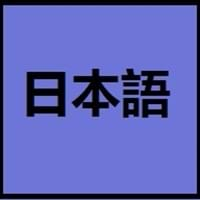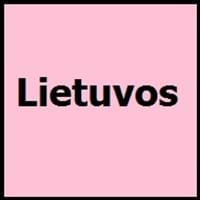Japanese and Lithuanian
Countries
Japan
European Union, Lithuania
National Language
Japan
Lithuania
Second Language
Not spoken in any of the countries
Not spoken in any of the countries
Speaking Continents
Asia, Pacific
Europe
Minority Language
Palau
Poland
Regulated By
Agency for Cultural Affairs (文化庁) at the Ministry of Education
Commission of the Lithuanian Language
Interesting Facts
- In Japanese Language, there are 4 different ways to address people: kun, chan, san and sama.
- There are many words in Japanese language which end with vowel letter, which determines the structure and rhythm of Japanese.
- Lithuanian has many loanwords that originate from Slavic, Germanic and other Baltic languages.
- "Catheciusmus" is the oldest known book in Lithuanian language in 1547.
Similar To
Korean Language
Latvian
Derived From
Not Available
Not Available
Alphabets in
Japanese-Alphabets.jpg#200
Lithuanian-Alpahbets.jpg#200
Writing Direction
Left-To-Right, Horizontal, Top-To-Bottom
Left-To-Right, Horizontal
Hello
こんにちは (Kon'nichiwa)
Sveiki
Thank You
ありがとう (Arigatō)
Ačiū
How Are You?
お元気ですか (O genki desu ka?)
Kaip sekasi?
Good Night
おやすみなさい (Oyasuminasai)
Labanakt
Good Evening
こんばんは (Konbanwa)
Labas vakaras
Good Afternoon
こんにちは (Konnichiwa!)
Laba diena
Good Morning
おはよう (Ohayō)
Labas rytas
Please
お願いします (Onegaishimasu)
Prašom
Sorry
ごめんなさい (Gomen'nasai)
atsiprašau
I Love You
愛しています (Aishiteimasu)
Aš myliu tave
Excuse Me
すみません (Sumimasen)
Atsiprašau
Dialect 1
Sanuki
Samogitian
Where They Speak
Kagawa
Lithuania
Dialect 2
Hakata
Aukštaitian
Where They Speak
Fukuoka
Lithuania
Dialect 3
Kansai
Curonian
Where They Speak
kansai
Lithuania
Speaking Population
Not Available
Native Name
日本語
lietuvių kalba
Alternative Names
Not Available
Lietuvi, Lietuviskai, Litauische, Litewski, Litovskiy
French Name
japonais
lituanien
German Name
Japanisch
Litauisch
Pronunciation
/nihoɴɡo/: [nihõŋɡo], [nihõŋŋo]
Not Available
Ethnicity
Japanese (Yamato)
Lithuanians
Language Family
Japonic Family
Indo-European Family
Subgroup
Not Available
Not Available
Branch
Not Available
Baltic
Early Forms
Old Japanese, Early Middle Japanese, Late Middle Japanese and Early Modern Japanese
No early forms
Standard Forms
Japanese
Lithuanian
Language Position
Not Available
Signed Forms
Signed Japanese
Lithuanian Sign Language
Scope
Individual
Individual
ISO 639 6
Not Available
Not Available
Glottocode
nucl1643
lith1251
Linguasphere
45-CAA-a
54-AAA-a
Language Type
Living
Living
Language Linguistic Typology
Subject-Object-Verb
Not Available
Language Morphological Typology
Agglutinative, Synthetic
Synthetic
All Japanese and Lithuanian Dialects
Most languages have dialects where each dialect differ from other dialect with respect to grammar and vocabulary. Here you will get to know all Japanese and Lithuanian dialects. Various dialects of Japanese and Lithuanian language differ in their pronunciations and words. Dialects of Japanese are spoken in different Japanese Speaking Countries whereas Lithuanian Dialects are spoken in different Lithuanian speaking countries. Also the number of people speaking Japanese vs Lithuanian Dialects varies from few thousands to many millions. Some of the Japanese dialects include: Sanuki, Hakata. Lithuanian dialects include: Samogitian , Aukštaitian. Also learn about dialects in South American Languages and North American Languages.
Japanese and Lithuanian Speaking population
Japanese and Lithuanian speaking population is one of the factors based on which Japanese and Lithuanian languages can be compared. The total count of Japanese and Lithuanian Speaking population in percentage is also given. The percentage of people speaking Japanese language is 1.90 % whereas the percentage of people speaking Lithuanian language is Not Available. When we compare the speaking population of any two languages we get to know which of two languages is more popular. Find more details about how many people speak Japanese and Lithuanian on Japanese vs Lithuanian where you will get native speakers, speaking population in percentage and native names.
Japanese and Lithuanian Language Codes
Japanese and Lithuanian language codes are used in those applications where using language names are tedious. Japanese and Lithuanian Language Codes include all the international language codes, glottocodes and linguasphere.





